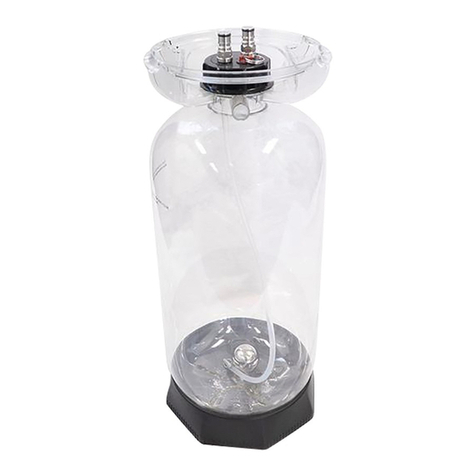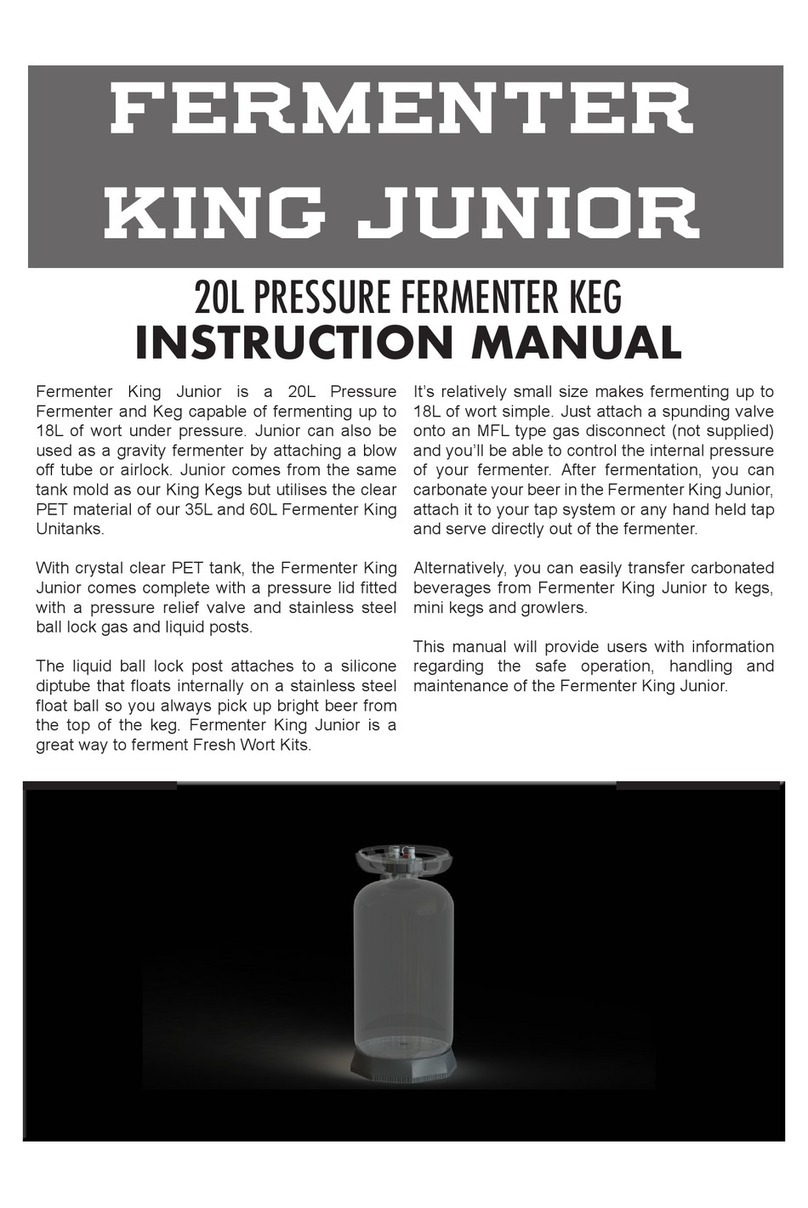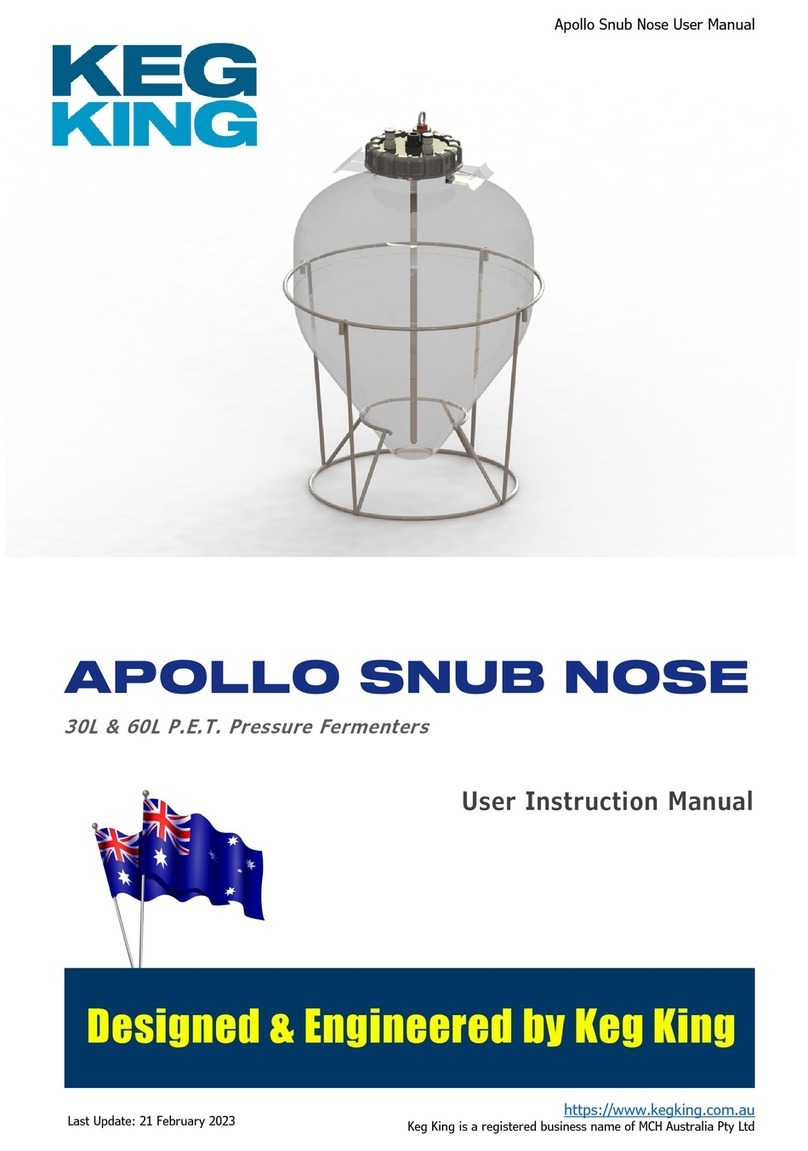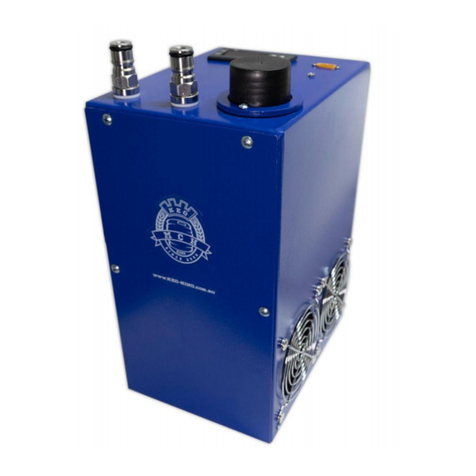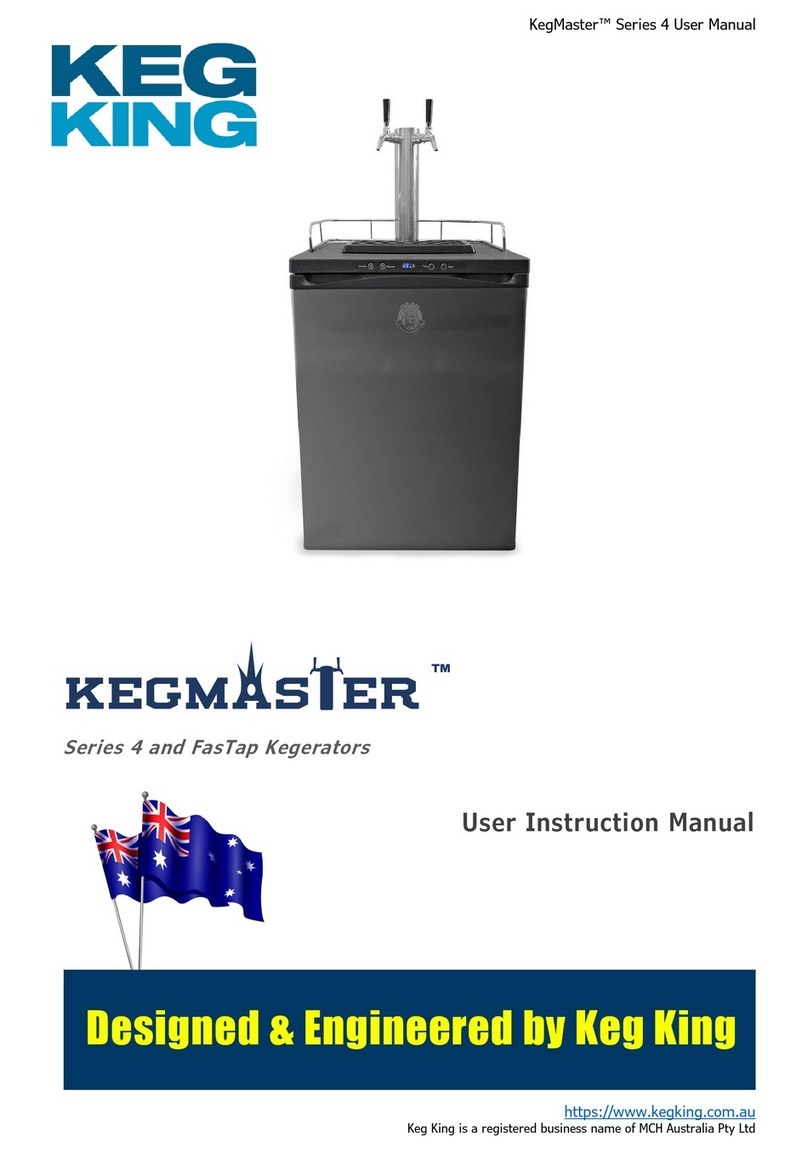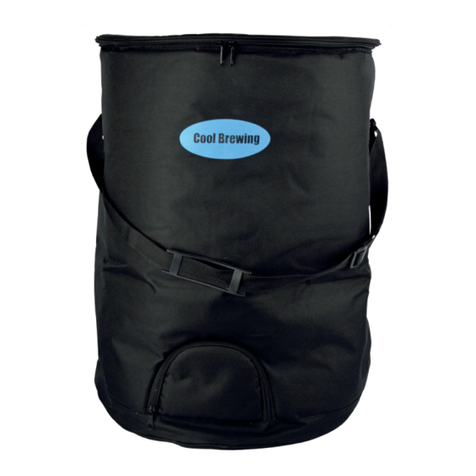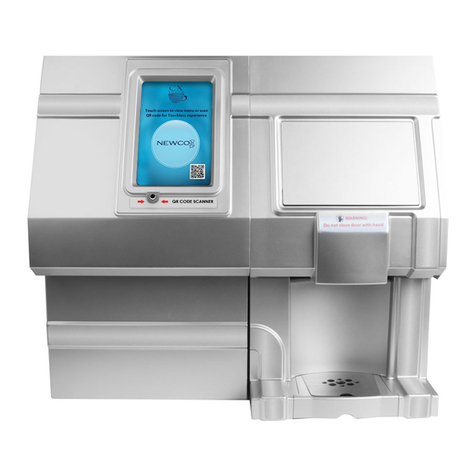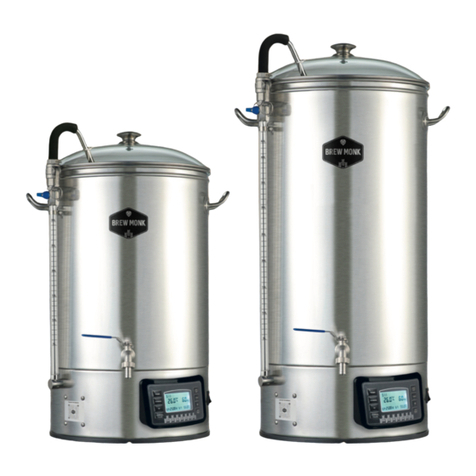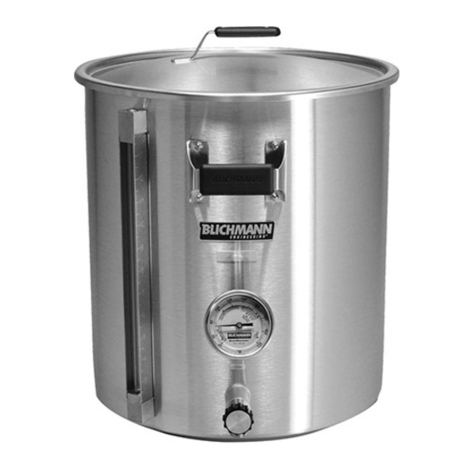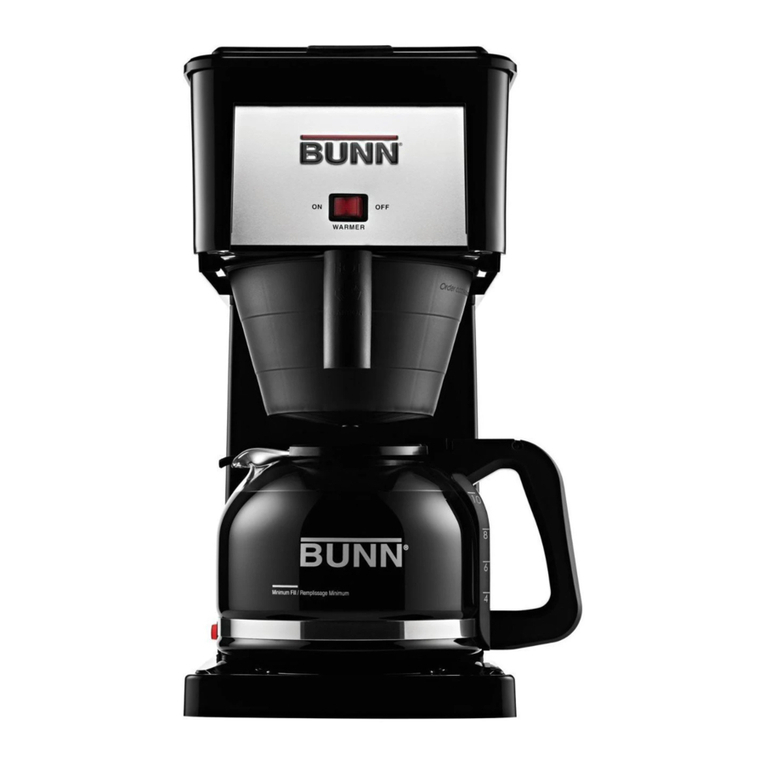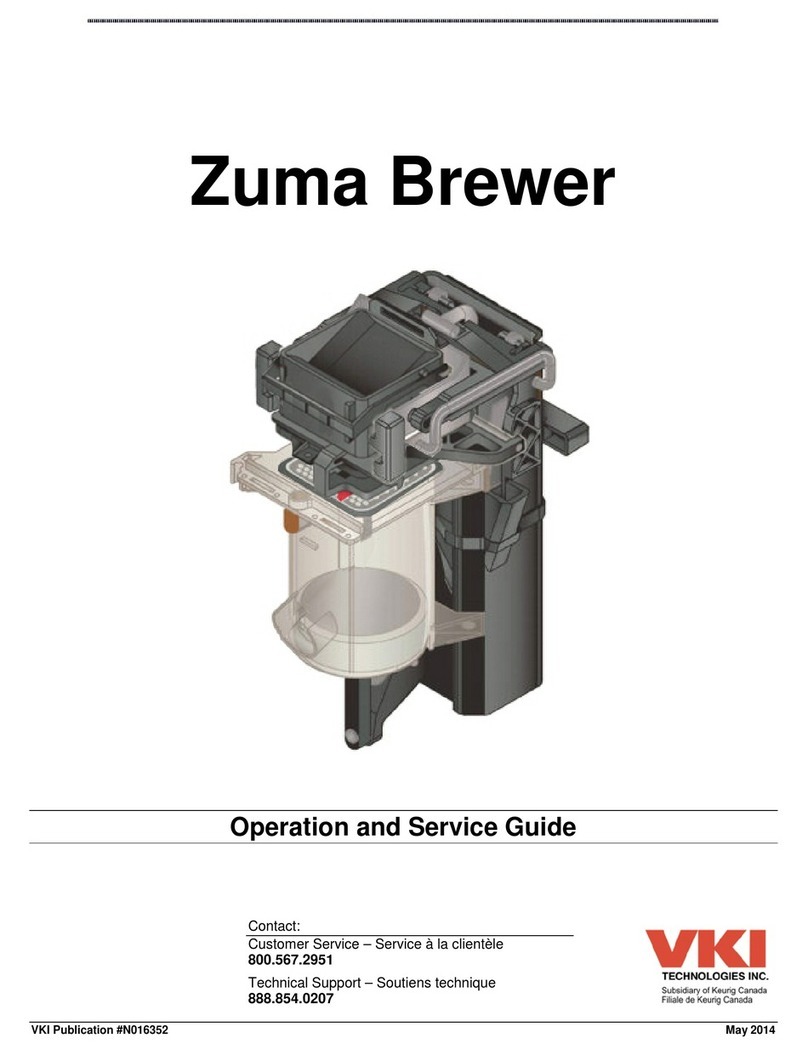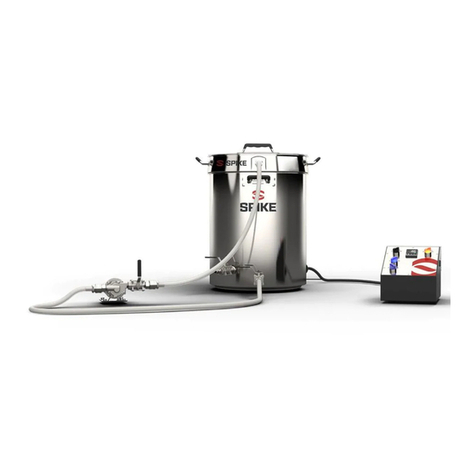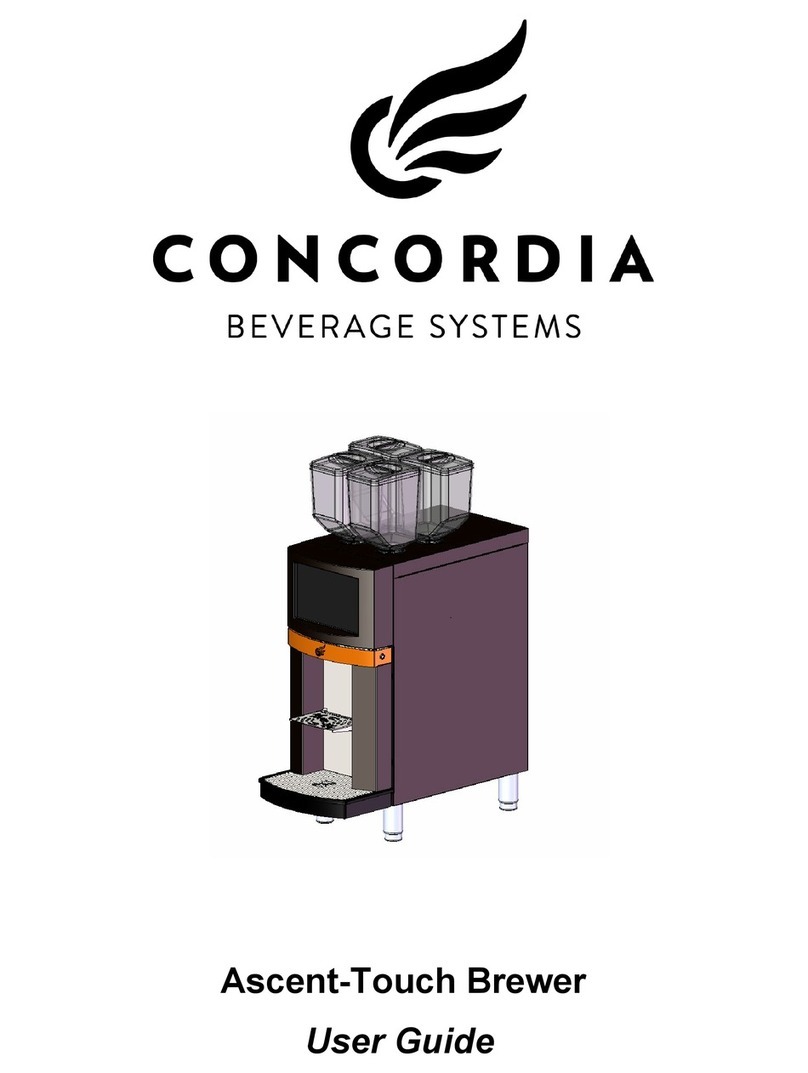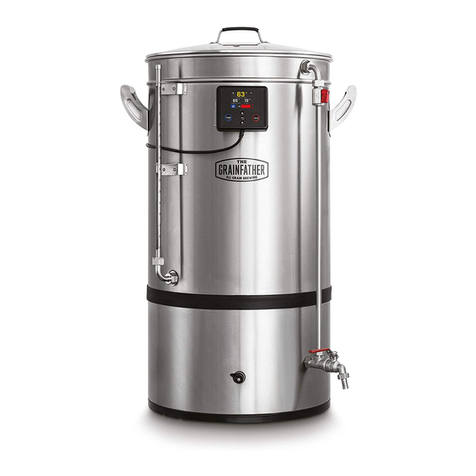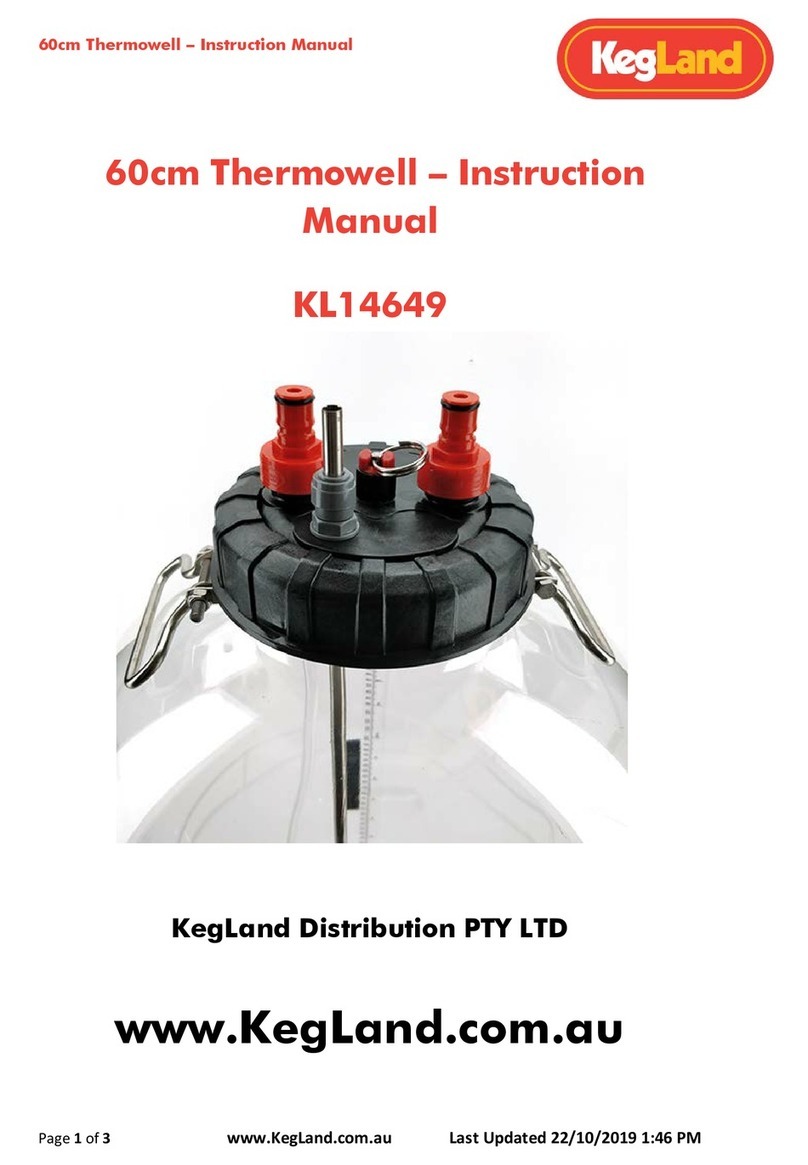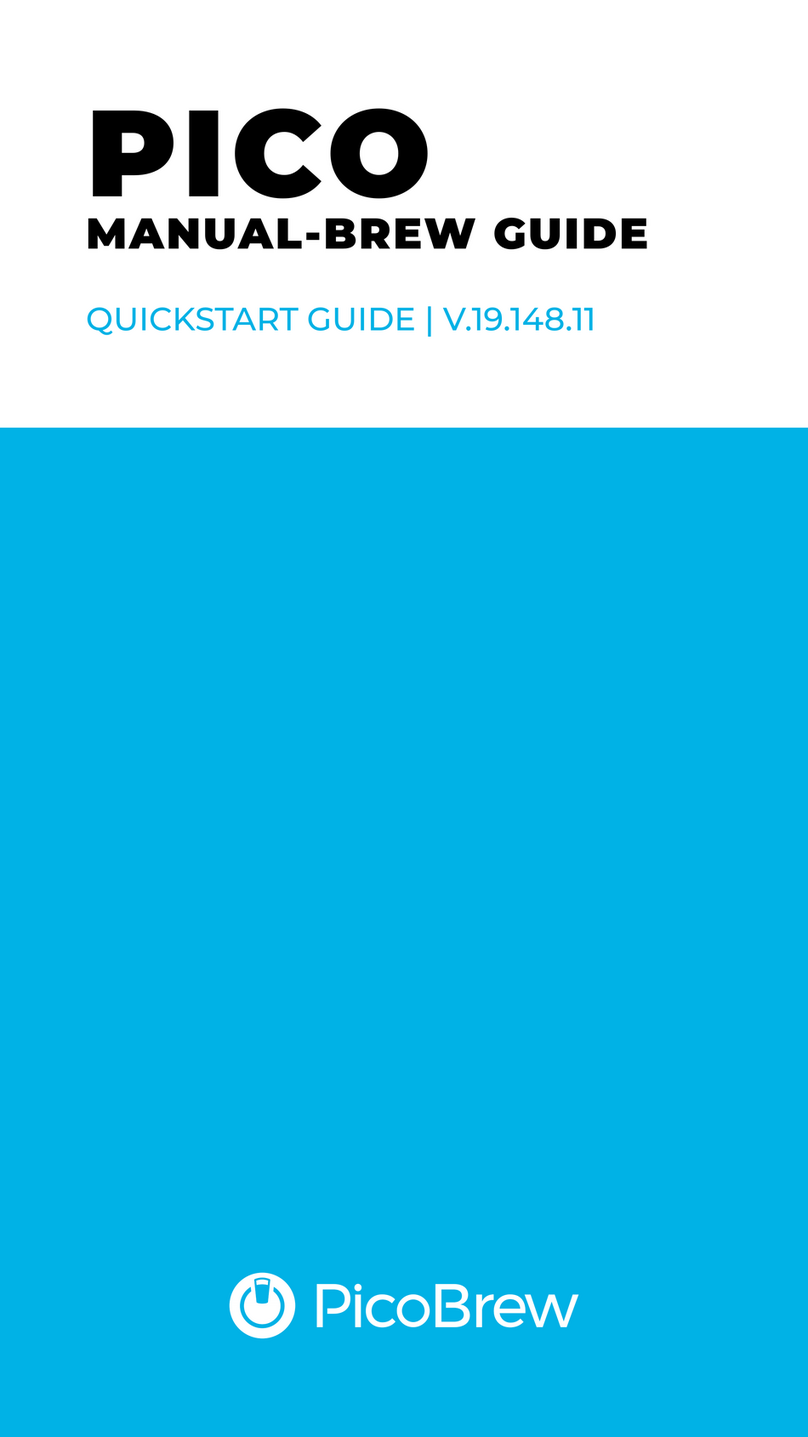
automatically beep to let you know when to
pitch in the hops. Since the default recipe has
no hop schedule, the Guten will continue boil-
ing until the timer is up. With ‘END’ on-screen,
press ‘START/PAUSE’ to exit back to the Idle
Screen.
7.2 Creating a Recipe
To create a recipe, press the AUTO/PAUSE
button from Idle Mode. By default, ‘R0S1’ will
display on-screen; R#’ being the recipe num-
ber (R0 – R9) and ‘S#’ being the step number
(S1 – S9). Adjust your power, temperature
and time settings for the 1st step and when
you are ready, press AUTO/PAUSE to move
onto the 2nd step, ‘R0S2’. Again, adjust your
settings before pressing AUTO/PAUSE to
continue.
Notice at ‘R0S3’, the temperature is set to
boiling. By default, the Nanobrewery com-
pletes the mash in 2 steps. If you want to add
more steps to your mash, simply change the
temperature to be below boiling and proceed
to adjust what is now the 3rd mash step. Up to
8 mash steps can be created per recipe.
Your mash prole will end when the tempera-
ture of your nal step is set to boiling. For
instance, if your mash has 8 different steps
(‘R0S1’ – ‘R0S8’), the boil prole will show at
‘R0S9’. After setting the boil step, press AUTO/
PAUSE to move onto your hopping schedule.
Adjust the timer to suit your hop additions;
note the number on the timer counts down-
wards. Press ‘TIMER’ to cycle through your
hop additions. Up to 9 hop additions (HOP 1
– HOP 9) can be created during the boil. To
make any nal adjustments, cycle through the
recipe settings with ‘AUTO/PAUSE’.
When you are ready to run the recipe, press
‘AUTO/PAUSE’ from the idle screen then
press ‘START/STOP’. While the recipe is
in operation, you can skip any steps with
‘START/STOP’ and make any real-time ad-
justments with ‘AUTO/PAUSE’. The recipe
itself is temporarily saved as long as the Na-
nobrewery is not switched off.
7.3 Saving a Recipe
To permanently save a recipe, press
‘MANUAL/PAUSE’ from Idle Mode, then
press ‘MANUAL/PAUSE’ again, holding
the button down for at least 5 seconds. A
4-note jingle should chime in, indicating
that the recipe has been saved for next
time.
7.4 Switching Recipes
To switch between recipes, hold down both
‘POWER’ and ‘TIMER’ on the idle screen
for 5 seconds and release. The current
recipe number will show on-screen. Press
‘+’ or ‘-’ to toggle between recipes and
press ‘START/STOP’ to conrm.
7.5 Resetting the Guten
To reset the Guten back to its default fac-
tory settings, go to the Idle Screen and
hold down ‘AUTO/PAUSE’ for at least 5
seconds. A 4-note chime will ring, and all
of your previously saved recipes will have
been deleted.
7.6 Changing Temperature Units
If you wish to change the temperature unit
to Fahrenheit, hold down ‘TEMP’ on the
Idle Screen for 5 seconds.
7.7 Calibrating the Guten
On the Idle Screen, hold down both the
‘+’ and ‘-’ buttons for 5 seconds. You’ll be
brought to the
calibration settings for temperature in de-
grees Celsius (C1) or degrees Fahrenheit
(F1). Using the ‘+’ and ‘-’ buttons, you can
toggle the temperature deviations; either
±10°C or ±50°F. Use spare temperature
probes to compare against the Guten’s
temperature probe, which is located on
the bottom surface of the vessel directly
opposite to the pump inlet.
